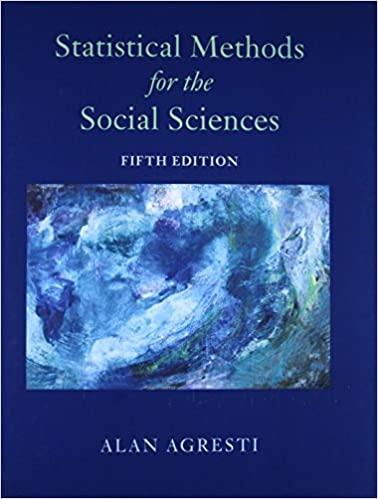The numerator R2 r2 yx1 of the squared partial correlation r2 yx2x1 gives the increase in
Question:
The numerator R2 – r2 yx1 of the squared partial correlation r2 yx2·x1 gives the increase in the proportion of explained variation from adding x2 to the model. This increment, denoted by r2 y(x2·x1), is called the squared semipartial correlation. One can use squared semipartial correlations to partition the variation in the response variable. For instance, for three explanatory variables,
The total variation in y explained by x1, x2, and x3 together partitions into (i) the proportion explained by x1 (i.e., r2 yx1 ), (ii) the proportion explained by x2 beyond that explained by x1 (i.e., r2 y(x2·x1)), and (iii) the proportion explained by x3 beyond that explained by x1 and x2 (i.e, r2 y(x3·x1,x2)). For a particular model, the semi-partial correlations have the same ordering as the t statistics for testing the partial effects, and some researchers use them as indices of importance of the explanatory variables.
(a) In Example 11.2 on mental impairment, show that r2 y(x2·x1)
= 0.20 and r2 y(x1·x2)
= 0.18. Interpret.
(b) Explain why the squared semipartial correlation r2 y(x2·x1) cannot be larger than the squared partial correlation r2 yx2·x1.
Step by Step Answer:






